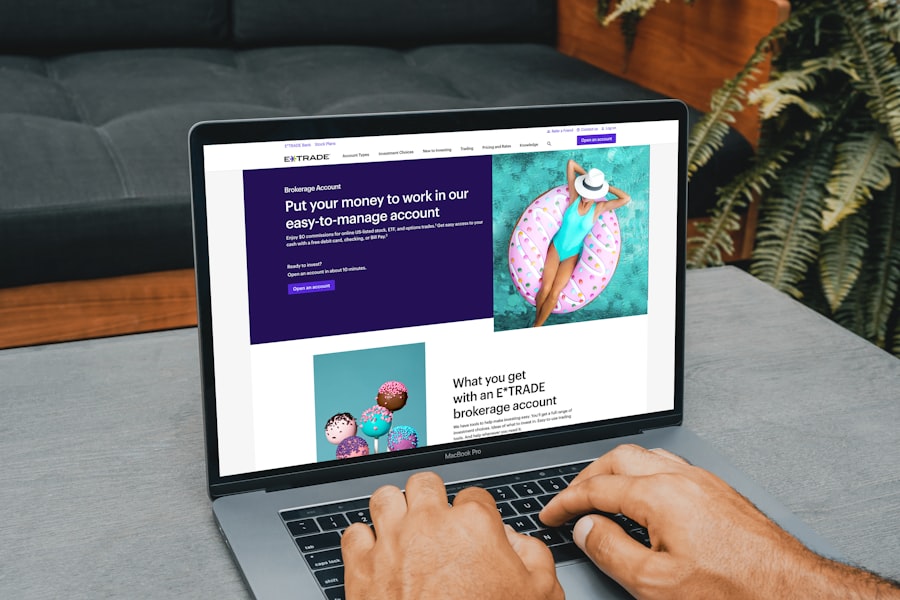Content marketing has emerged as a pivotal strategy within the healthcare sector, serving as a bridge between medical professionals and patients. At its core, content marketing in healthcare involves creating and distributing valuable, relevant content to attract and engage a clearly defined audience. This approach is particularly crucial in an industry where trust and information accuracy are paramount.
By providing educational resources, healthcare organizations can empower patients to make informed decisions about their health, thereby enhancing patient engagement and satisfaction. Moreover, the role of content marketing extends beyond mere information dissemination. It fosters a deeper connection between healthcare providers and patients, facilitating a two-way communication channel.
For instance, blogs, videos, and infographics can demystify complex medical concepts, making them accessible to a broader audience. This not only helps in building a knowledgeable patient base but also positions healthcare organizations as thought leaders in their respective fields. As patients increasingly turn to online resources for health-related information, the importance of a robust content marketing strategy becomes even more pronounced.
Key Takeaways
- Content marketing in healthcare educates and engages patients, enhancing their decision-making.
- Digital platforms expand reach and personalize healthcare content for diverse audiences.
- Data analytics optimize content strategies by understanding consumer behavior and preferences.
- Building trust through accurate, transparent information is crucial in healthcare marketing.
- Measuring ROI involves tracking engagement, conversions, and compliance with regulations.
Leveraging Digital Platforms for Healthcare Content Marketing
In today’s digital age, healthcare organizations have a plethora of platforms at their disposal to disseminate content effectively. Websites, social media channels, email newsletters, and mobile applications are just a few examples of the digital tools that can be harnessed to reach target audiences. Each platform offers unique advantages; for instance, social media allows for real-time engagement and interaction, while websites serve as comprehensive repositories of information.
By strategically leveraging these platforms, healthcare providers can enhance their visibility and accessibility. Social media platforms like Facebook, Twitter, and Instagram have become essential for healthcare content marketing. They not only facilitate the sharing of informative content but also enable organizations to engage with patients directly.
For example, a hospital might use Instagram to share patient success stories or health tips through visually appealing graphics. This not only humanizes the institution but also encourages community interaction. Additionally, email marketing remains a powerful tool for nurturing relationships with patients by delivering personalized content directly to their inboxes, such as health reminders or newsletters featuring the latest medical advancements.
Creating Engaging and Informative Content for Healthcare Consumers

The creation of engaging and informative content is fundamental to successful healthcare content marketing. This involves understanding the needs and preferences of the target audience and tailoring content accordingly. For instance, patients often seek information about specific conditions, treatment options, or preventive measures.
By addressing these topics through well-researched articles, videos, or podcasts, healthcare organizations can provide valuable insights that resonate with their audience. Furthermore, the format of the content plays a crucial role in its effectiveness. Visual content such as infographics can simplify complex medical data, making it easier for patients to grasp essential information quickly.
Similarly, video content can be particularly engaging; for example, a short video explaining a surgical procedure can demystify the process and alleviate patient anxiety. Interactive content like quizzes or surveys can also enhance engagement by encouraging users to participate actively in their health journey. Ultimately, the goal is to create content that not only informs but also inspires action, whether that be scheduling an appointment or adopting healthier lifestyle choices.
Utilizing Data and Analytics to Drive Healthcare Content Marketing Strategies
| Metric | Description | Example Value | Impact on Healthcare Content Marketing |
|---|---|---|---|
| Patient Engagement Rate | Percentage of patients interacting with content (likes, shares, comments) | 45% | Higher engagement indicates content relevance and effectiveness in patient education |
| Content Conversion Rate | Percentage of users who take a desired action after consuming content (e.g., sign-up, appointment booking) | 12% | Measures how well content drives patient actions and supports marketing goals |
| Click-Through Rate (CTR) | Ratio of users who click on a link within the content to total viewers | 8.5% | Indicates effectiveness of calls-to-action and content appeal |
| Average Time on Page | Average duration users spend reading healthcare content | 3 minutes 45 seconds | Longer time suggests higher content engagement and value |
| Audience Demographics | Data on age, gender, location, and health interests of content consumers | Age 30-50 (60%), Female (55%), Urban (70%) | Helps tailor content to target patient segments for better relevance |
| Search Engine Ranking | Position of healthcare content in search engine results for targeted keywords | Top 3 for “diabetes management tips” | Improves organic traffic and visibility of healthcare content |
| Content Share Rate | Frequency at which content is shared across social media and other platforms | 25 shares per 1000 views | Amplifies reach and credibility of healthcare messaging |
| Patient Feedback Score | Rating given by patients on the usefulness and clarity of content | 4.6 out of 5 | Direct measure of content quality and patient satisfaction |
Data and analytics are indispensable tools in shaping effective healthcare content marketing strategies. By analyzing user behavior and preferences, healthcare organizations can gain insights into what types of content resonate most with their audience. For instance, tracking metrics such as page views, time spent on pages, and social media shares can provide valuable feedback on content performance.
This data-driven approach allows marketers to refine their strategies continuously and focus on producing high-impact content. Moreover, analytics can help identify gaps in existing content offerings. If data reveals that patients frequently search for information on a specific health topic that is underrepresented in current materials, organizations can prioritize creating new content to fill that void.
Additionally, segmentation analysis can help tailor messaging to different patient demographics, ensuring that the right information reaches the right audience at the right time. By leveraging data effectively, healthcare marketers can create targeted campaigns that not only enhance patient engagement but also drive better health outcomes.
Building Trust and Credibility through Healthcare Content Marketing
Trust is a cornerstone of effective healthcare delivery, and content marketing plays a vital role in establishing credibility among patients. In an era where misinformation is rampant, providing accurate and reliable information is essential for healthcare organizations. By consistently delivering high-quality content that is backed by research and expert opinions, organizations can position themselves as trustworthy sources of information.
One effective strategy for building trust is through transparency in communication. Sharing behind-the-scenes insights into medical practices or introducing healthcare professionals through video interviews can humanize the organization and foster a sense of connection with patients. Additionally, featuring testimonials from satisfied patients can further enhance credibility by showcasing real-life experiences.
When patients see that others have benefited from the services provided, they are more likely to trust the organization with their own health needs.
The Impact of Social Media on Healthcare Content Marketing

Social media has revolutionized the way healthcare organizations communicate with their audiences. Platforms like Facebook, Twitter, LinkedIn, and Instagram offer unique opportunities for sharing content and engaging with patients in real-time. The immediacy of social media allows healthcare providers to disseminate important information quickly—whether it’s updates on new treatments or public health alerts—ensuring that patients receive timely guidance.
Moreover, social media serves as a platform for community building among patients and healthcare providers alike. Online support groups or forums can facilitate discussions around specific health issues, allowing patients to share experiences and advice. For instance, a cancer treatment center might create a Facebook group where patients can connect with one another and share their journeys.
This not only fosters a sense of belonging but also enhances patient education through peer-to-peer interactions. Additionally, social media analytics provide valuable insights into audience engagement levels, enabling organizations to refine their strategies based on what resonates most with their followers.
Navigating Regulatory Challenges in Healthcare Content Marketing
The healthcare industry is heavily regulated, which presents unique challenges for content marketers aiming to promote their services while adhering to legal guidelines. Organizations must navigate various regulations such as HIPAA (Health Insurance Portability and Accountability Act) in the United States, which governs patient privacy and data security. Ensuring compliance while still delivering compelling content requires careful planning and execution.
To navigate these regulatory challenges effectively, healthcare marketers should prioritize transparency and accuracy in their messaging. This includes avoiding misleading claims about treatments or services and ensuring that all information shared complies with relevant regulations. Collaborating with legal teams during the content creation process can help mitigate risks associated with non-compliance.
Furthermore, providing disclaimers when necessary—such as indicating that certain information is not a substitute for professional medical advice—can help clarify the intent of the content while protecting the organization from potential legal repercussions.
Measuring Success and ROI in Healthcare Content Marketing
Measuring the success of healthcare content marketing efforts is essential for understanding their impact on patient engagement and organizational goals. Key performance indicators (KPIs) such as website traffic, conversion rates (e.g., appointment bookings), social media engagement metrics (likes, shares), and email open rates provide valuable insights into how well content resonates with audiences. By analyzing these metrics regularly, organizations can assess which strategies are working effectively and which areas require improvement.
Calculating return on investment (ROI) in healthcare content marketing involves evaluating both quantitative and qualitative outcomes. While metrics like increased patient inquiries or higher appointment bookings provide tangible evidence of success, qualitative feedback—such as patient testimonials or improved satisfaction scores—can also indicate the effectiveness of content efforts. By combining these insights with ongoing data analysis, healthcare organizations can refine their marketing strategies to maximize impact while ensuring alignment with overall business objectives.



